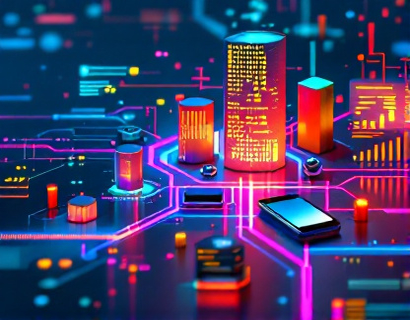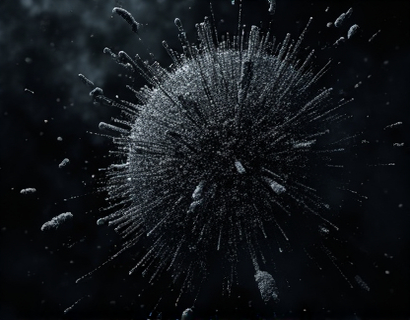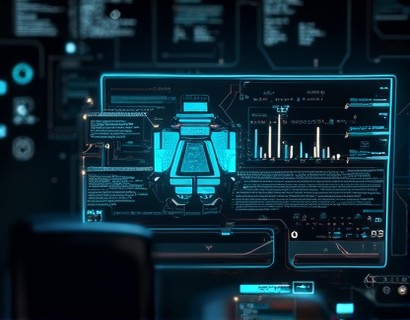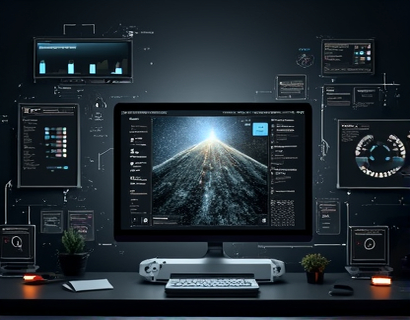Revolutionizing Access to Specialized Plasma Services Information: An AI-Powered Chat Interface
Introduction to AI-Powered Chat Interfaces in Specialized Industries
In the rapidly evolving landscape of technology and industry, the integration of Artificial Intelligence (AI) has opened new avenues for information dissemination and user engagement. One such innovative application is the development of an AI-powered chat interface specifically designed to provide in-depth knowledge on specialized plasma services and related industry insights. This platform stands at the intersection of educational technology and industrial expertise, aiming to deliver accurate, safe, and user-friendly content to a diverse audience, including children and students.The concept of using AI to create interactive and informative chat interfaces is not new, but its application in specialized fields like plasma services is groundbreaking. Plasma, often referred to as the fourth state of matter, plays a crucial role in various industries, from medical treatments to advanced manufacturing processes. However, the complexity and specificity of plasma-related information can be daunting for the general public, especially for younger audiences. An AI-powered chat interface addresses this challenge by offering a tailored, conversational approach to learning and inquiry.Designing for Safety and Educational Value
One of the primary concerns when developing an AI chat interface, particularly for sensitive topics and young users, is ensuring the content is both accurate and safe. The platform employs rigorous content verification processes to guarantee that all information provided is up-to-date, reliable, and free from misinformation. This commitment to accuracy is paramount, especially when dealing with specialized subjects like plasma services, where misunderstandings can lead to misapplication or safety risks.For children and students, the chat interface is designed with additional layers of safety and educational value. The language used is simplified and age-appropriate, ensuring that complex concepts are accessible without compromising on depth. The interface includes features such as a "child mode" that filters content to match the cognitive and reading levels of younger users, while still providing comprehensive and accurate information. This dual approach ensures that the platform is both educational and secure, fostering a learning environment that is both safe and enriching.Enhancing User Interaction with AI Technology
The AI chat interface leverages advanced natural language processing (NLP) and machine learning algorithms to understand and respond to user queries effectively. This technology enables the chatbot to engage in natural, conversational dialogue, making the interaction feel more personal and less robotic. Users can ask a wide range of questions, from basic definitions and principles of plasma to advanced applications and industry trends. The AI is trained on a vast dataset of verified information, allowing it to provide detailed and contextually relevant answers.One of the key features of this AI chat interface is its ability to learn from user interactions. Over time, the system adapts to common queries and user preferences, refining its responses to be more accurate and helpful. This continuous learning process ensures that the platform remains a valuable resource, constantly updated with the latest industry insights and developments.Comprehensive Coverage of Plasma Services and Industry Insights
The AI chat interface offers a comprehensive repository of information covering various aspects of plasma services and the broader industry. Users can explore topics such as the fundamental properties of plasma, its production methods, and its applications in different sectors. Here are some of the key areas covered:Fundamentals of Plasma
Plasma is often described as the fourth state of matter, distinct from solid, liquid, and gas. It is formed when a gas is heated to extremely high temperatures, causing the atoms to ionize and separate into ions and free electrons. This state of matter is characterized by its unique electrical and magnetic properties, making it highly versatile and valuable in numerous applications.Production Methods
Plasma can be produced through several methods, each with its own advantages and applications. Common methods include:- Electrical Discharge: This method uses an electric arc to ionize a gas, creating plasma. It is widely used in industrial processes such as plasma cutting and welding.
- Microwave Plasma: In this method, microwave energy is used to ionize a gas, producing a plasma that is more uniform and controllable. It is often used in plasma synthesis and surface treatment processes.
- Inductive Plasma: This method employs electromagnetic induction to generate plasma. It is commonly used in plasma arc gasification and waste treatment applications.
Industry Applications
Plasma technology has a wide range of applications across various industries, contributing to advancements and innovations. Some of the key areas include:Medical Applications
In the medical field, plasma is used for sterilization and tissue engineering. Plasma-based sterilization methods are highly effective in eliminating bacteria and viruses without damaging sensitive materials. Additionally, plasma-assisted techniques are being explored for tissue regeneration and wound healing, offering promising solutions for medical challenges.Environmental Applications
Plasma technology plays a crucial role in environmental management and sustainability. Plasma gasification, for instance, is a process that converts waste materials into synthesis gas (syngas), which can be used to generate electricity or produce chemical feedstocks. This method offers an environmentally friendly alternative to traditional waste disposal techniques, reducing landfill use and greenhouse gas emissions.Manufacturing and Materials Science
In manufacturing, plasma processes are used for surface treatment, cutting, and welding. Plasma cutting, for example, allows for precise and clean cuts in metals, making it an essential tool in industries such as automotive and aerospace. Plasma-coated materials exhibit enhanced properties like corrosion resistance and wear durability, extending the lifespan and performance of products.Energy Production
Plasma has significant potential in the field of energy production, particularly in nuclear fusion research. Fusion, the process that powers the sun, involves combining light atomic nuclei to form heavier ones, releasing vast amounts of energy. Plasma confinement techniques, such as magnetic confinement and inertial confinement, are key to achieving controlled nuclear fusion, which could provide a nearly limitless and clean energy source.Ensuring Accuracy and Safety Through Content Verification
The integrity of the information provided by the AI chat interface is of utmost importance. To ensure accuracy and safety, the platform employs a multi-step content verification process. This process involves:1. Expert Review: All content is reviewed by subject matter experts in plasma science and related fields. These experts validate the information for technical accuracy and relevance.
2. Cross-Referencing: The system cross-references information with reputable sources, academic journals, and industry standards to ensure consistency and reliability.
3. User Feedback: User interactions and feedback are monitored to identify any potential issues or inaccuracies. This feedback loop helps in continuously improving the content and addressing any concerns.
4. Regular Updates: The platform is regularly updated with the latest research and industry developments, ensuring that the information remains current and relevant.
By implementing these verification steps, the AI chat interface maintains a high standard of accuracy and safety, making it a trusted resource for users of all ages.









































